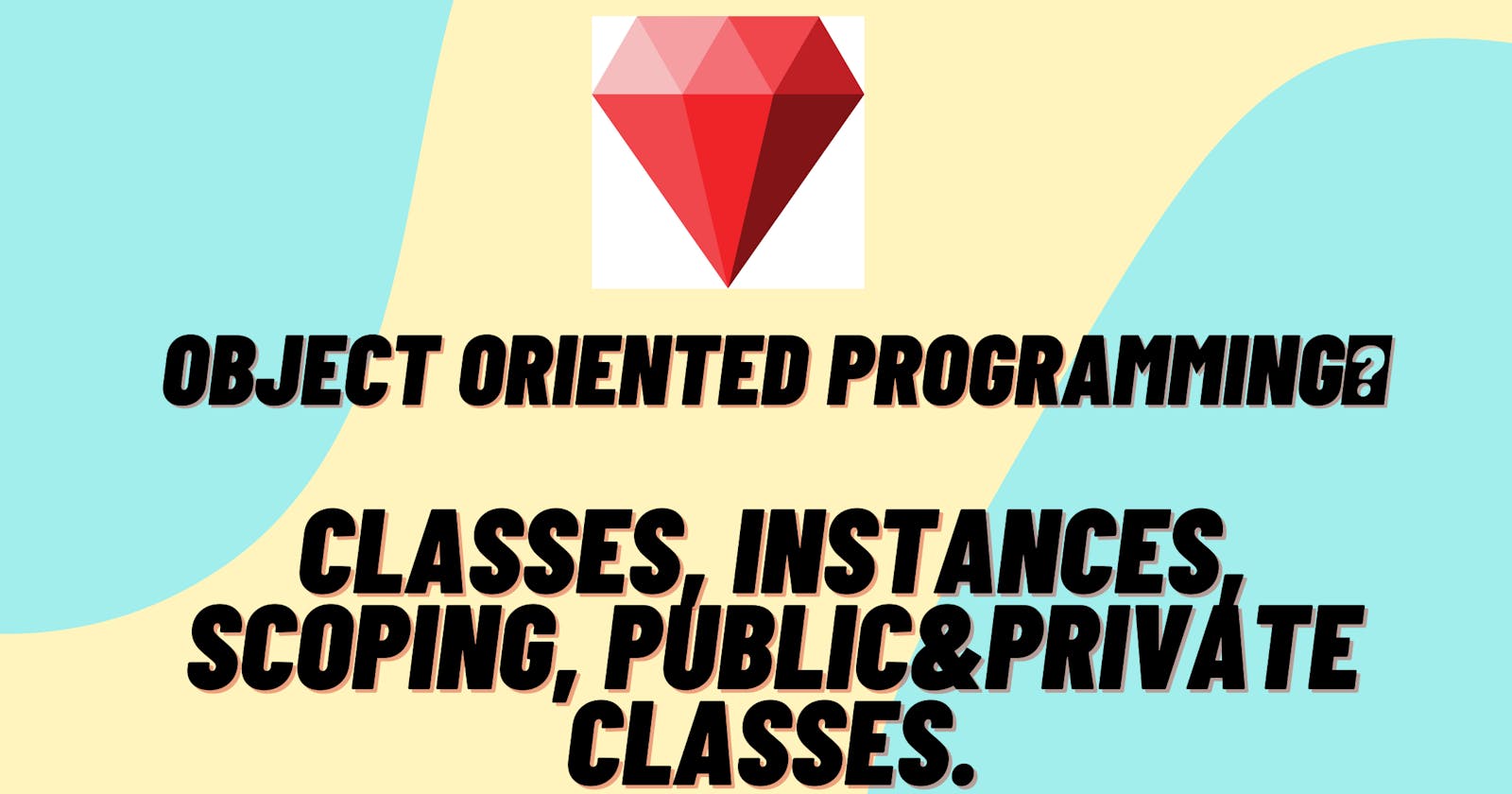Introduction
Till now we only learned about simple concepts that are very easy to understand Hold on !! I make you understand easily through my blogs, Just kidding never mind :). Openly say whenever I reach this concept I feel like entering a new world of known things but things make no sense while working. As I have basic knowledge of Oops with python through ruby Oops I get clarity even more. In simple words, through Oops, we can get real-time software-building experience.
Why
This is the concept that I am super curious about. I DO write a blog separately on this. Simply put, this is of the programming paradigms used in most software design.
Class
The basic definition of class is "It is the basic building block of Object Oriented Programming(OOP)&they help you define a blueprint for creating objects."
Let's understand the definition it would be great if we break it.
Before that DO try to revise simple ruby code. At starting we discussed that like a python in ruby, everything is an object.
a = 10
Here "a" is an object. The conversation of data type is explicitly done in ruby. So it is happening internally we can't even bother about it right!!
Does the question raise?
Why we are not getting any error while storing 10 in the "a"
This is because of the blueprint. Interpreter has an inbuilt ruby integer class that explicitly assigns the value accordingly.
Shall we create our own objects as per our wish the answer is "yes" we can. This is also one of the reasons why Oops came into existence.
We can create any blueprint as we wish and create any objects for that.
Terminology
Does the class have different terminology?
The answer is NO. but it's not terminology we can call it different names
in the classes
variables are called--> attributes
functions/methods are called--> behaviors
Syntax
The class can be created by using the class keyword followed by the class name. By convention, the class name starts with a capital letter. Like loops and conditional statements, classes also have to finish with the "end" keyword.
class Person
end
Instances
An instance of the class is called an object.
first, look at what is an instance.
an instance can be created by class_name followed by a new keyword.
obj = Person.new
The new literally told the interpreter to create separate memory for this class.
Adding arguments after new is depends we can look at this while learning constructor.
Let's try to create our own object for our blueprint
class Person
print "malavi pande"
end
obj = Person.new
output:
malavi pande
Compare
This is not at all related to the current topic but this is the most underrated skill we have to build in my opinion.
let's understand this with the code base
name = "Malavi"
print name.length
output:
6
In the above code name is the string class instance and length is the method in that class. So, in this way, everything is an object in the ruby.
Scoping
Everything present in the code editor is not accessible everywhere. Technically we can call it scoping. We can even specify using variables.
There are mainly 3 types of variables are there
Global variables
Instance variables
classes variables
Global variables
The name itself indicates that it is available everywhere. We can say it is a global variable by placing "$" in front of that variable.
class Person
$name = "Malavi"
def name
puts $name
end
end
obj = Person.new
obj.name
output:
Malavi
Instance variables
Before getting into this variables scoping we have to first know about the initialize method. This is the same as python into methods. In even more simple terms we can call it a constructor. This is the special method in the class.
In general, we call the class methods using objects. But this construct method executes while creating an object, it is explicitly classed by the class only.
The variables defined inside the constructor are class instance variables.
class Person
def initialize(name,surname)
@name = name #instance variables
@surname = surname
end
def display
puts @name + @surname
end
end
obj = Person.new("malavi", "pande")
obj.display
output:
malavipande
This is the magic that happens with the instance variables
Class Variables
Class variables are like instance variables but instead of belonging to an instance of a class, they belong, the class, itself. They are mainly useful to keep track.
class Person
@@count = 0
def display
@@count += 1
end
end
obj = Person.new
puts obj.display
output:
1
Public&Private methods
This concept came into the picture because of security purposes. So, the methods start with private keywords that can only be accessible inside the class only. If you leave any method inside the class explicitly it can be considered a public method.
class Person
public
def email
print "malavipande7@gmail.com"
password
end
private
def password
print "123456"
end
end
obj = Person.new
obj.email # this print the email
obj.password # this alters us with warning redarding private keyword
If you define any method after declare the previous method with private keyword by default after that method ruby cosiders everything as private.
So, the best practice is define all the public methods before private methods start.
Conclustion
This is all about Oops introduction. This is my way of understanding and explanation of object oriented programming. I am pretty sure that it is not possible to understand the this concept in one go. But do try to relate things while learning it help to get things more clear. Feel very free to comment below about the blog.
